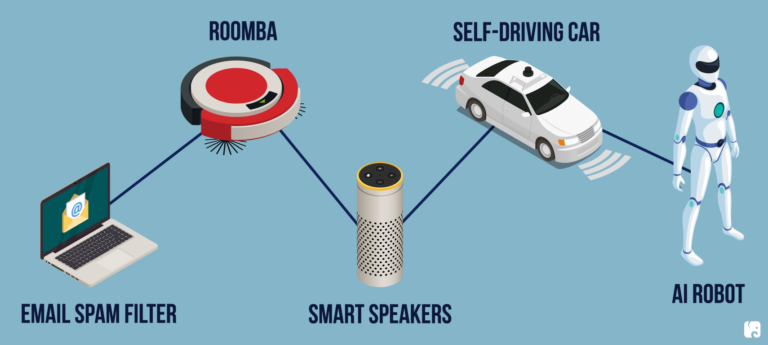Can Wi-Fi Go Through Floors?
Wi-Fi has become a vital part of modern life, allowing us to access the internet from anywhere in the house. But have you ever wondered if Wi-Fi can pass through floors? Can signals from your router travel from upstairs to downstairs, or even through multiple floors? The answer is yes, though the strength of the signal will depend on a variety of factors. In this article, we’ll explore how Wi-Fi signals are able to pass through floors, and the best ways to maximize signal strength.
What is Wi-Fi?
Wi-Fi is a wireless technology that allows users to connect to the internet without the need for cables or wires. It is increasingly becoming the most popular way to access the internet. Wi-Fi networks use radio waves to transmit data between different devices, such as computers, smartphones, and tablets. The strength of the signal varies depending on the distance from the router and other factors such as obstacles, walls, and floors. This raises the question: can Wi-Fi go through floors?
In short, the answer is yes. Wi-Fi signals can travel through floors, ceilings, and walls. The strength of the signal, however, will diminish as the distance between the router and the device increases. The type of floors, walls, and ceilings in a building can also affect the signal strength. For example, thicker walls, like concrete, can block the signal while thinner walls, like drywall, will allow the signal to pass through more easily. While Wi-Fi can travel through floors, it is important to consider the layout of the building and the materials used in the construction when setting up a Wi-Fi network.
How Does Wi-Fi Work?
Wi-Fi is a wireless technology that allows us to connect to the internet without the need for physical cables or wires. It is a form of radio communication that works by sending and receiving signals over the airwaves. Wi-Fi signals travel through walls, ceilings, and floors, but the strength of the signal may be reduced depending on the material and thickness of the surface. To understand how Wi-Fi works, it’s important to understand the basics of radio wave technology. Radio waves are a form of electromagnetic radiation, and they are transmitted through the air using antennas. Wi-Fi antennas use radio waves to send and receive data over the air. When a Wi-Fi device is connected to a router, the router sends out a signal that is received by the device. The signal travels through walls, ceilings, and floors, but the thickness and material of the surface may affect the strength of the signal. Understanding the basics of radio wave technology is essential to understanding how Wi-Fi works and how it can be used to connect to the internet.
What Factors Impact Wi-Fi Through Floors?
Wi-Fi, the wireless technology that’s become an integral part of our lives, has made it possible to connect to the internet from almost any corner of the world. But what about Wi-Fi going through floors? Can it do that? The answer is yes, but it is not always a given. It depends on a variety of factors that can impact the strength and range of your Wi-Fi signal.
Factors like the type of flooring, building materials, and the presence of other electronic devices can all affect the ability of Wi-Fi to travel through floors. For example, hardwood, stone, or concrete floors are more difficult for Wi-Fi to penetrate than carpets or rugs, while metal objects like radiators can interfere with the signal. Additionally, thick walls or multiple floors can also impede signal propagation.
To ensure your Wi-Fi signal has the best chance of going through floors, it helps to use a device like a Wi-Fi extender or mesh network. These devices can help boost your signal and ensure you’re getting the best coverage possible. Additionally, using a higher-quality router with a powerful antenna can also help extend your signal.
Overall, it is possible to get a Wi-Fi signal through floors, but there are several factors that can impact its reliability. Paying attention to the type of flooring, building materials, and other devices in the area can help ensure you get the best coverage possible. Investing in a Wi-Fi extender or mesh network can also help boost your signal and get you the best coverage.
Common Building Materials and Wi-Fi Performance
When it comes to Wi-Fi performance, not all materials are created equal. Certain common building materials can affect the performance of Wi-Fi signals traveling through walls and floors. To understand how certain materials impede Wi-Fi performance, it is important to understand how Wi-Fi signals travel. Wi-Fi signals travel in waves, and these waves can be easily blocked, reflected, or absorbed by various materials.
For example, thick walls made of brick, concrete, or metal can block the signal, while wood can reflect the signal. These materials can cause the signal to weaken or completely stop when it comes to traveling through multiple floors of a building. On the other hand, materials like drywall, glass, and plastic can allow Wi-Fi signals to pass through more easily.
The type of material that is used in the construction of a home or building can have a significant impact on the performance of Wi-Fi signals and the overall speed of the network. Wi-Fi signals may travel more quickly and reliably when using lighter materials, such as wood and drywall, than when using heavier materials, such as brick and concrete.
It is important to consider the building materials of a home or building when setting up a Wi-Fi network. Knowing the materials that are used in the construction of a building can help determine the type of equipment that is needed and the best placement of routers and access points to maximize Wi-Fi performance.
Wi-Fi Extenders and Other Solutions
Wireless (Wi-Fi) signals can travel through walls and other obstructions, but they don’t always reach the far corners of a large home or office. When a wireless device is unable to access a router’s signal, it is often because the signal has been significantly weakened or blocked by floors, walls, and other obstacles. To overcome this problem, many people turn to Wi-Fi extenders.
Wi-Fi extenders are essentially small devices that sit between the router and the device, boosting the signal and allowing it to travel further. Wi-Fi extenders come in a variety of shapes and sizes, from the small mesh-type devices to power-line adapters that use existing electrical wiring in the walls to transmit the signal.
For those who don’t want to invest in an extender, there are other solutions. One is to rearrange furniture to better direct the signal. Another is to use a directional antenna, which can effectively extend the range of the signal. Finally, one can also look into upgrading the router to one with a stronger signal.
In conclusion, while Wi-Fi signals can pass through floors and other obstacles, they don’t always reach the desired location. Fortunately, there are solutions available, such as Wi-Fi extenders, rearranging furniture, using a directional antenna, and upgrading the router. With the right solution, it is possible to extend the range of a wireless signal, allowing it to reach more areas in the home or office.
FAQs About Wi-Fi Through Floors
Wi-Fi is a convenient and commonplace technology that allows us to access the internet from the comfort of our own homes. But what happens when it comes to wireless signals going through floors? Can Wi-Fi go through floors? To answer this question, let’s take a look at the FAQs about Wi-Fi through floors.
The first question to ask is whether or not wireless signals can penetrate walls and floors. The answer is yes and no. Wi-Fi signals can travel through walls and floors, but the strength of the signal will vary depending on the material. For example, thick concrete walls will block most of the signal, while thinner drywall will allow more of the signal to pass through.
The second question to ask is whether or not the signal will be weakened when it passes through floors. Again, the answer is yes and no. In most cases, the signal will be weakened but the exact amount will depend on the material of the floor. Hardwood floors, for example, will block more of the signal than carpet.
Finally, it’s important to consider the range of the signal. The signal will be weakened the further it travels, so it’s important to make sure that the router is positioned in an optimal spot. Additionally, it’s important to keep in mind that walls and floors can cause interference, so it’s important to position the router away from these surfaces.
These are just a few of the questions to consider when it comes to Wi-Fi going through floors. By understanding the basics of wireless technology, you can make sure that your home’s Wi-Fi connection is as strong as possible.
FAQs About the Can Wi-Fi Go Through Floors?
1. Does Wi-Fi have the ability to travel through walls or floors?
Yes, Wi-Fi has the ability to travel through walls and floors, although the strength of the signal will be significantly reduced when passing through higher density building materials such as concrete.
2. What is the best way to extend my Wi-Fi signal?
The best way to extend your Wi-Fi signal is to use a range extender or access point. This device receives the signal from your router and re-broadcasts it to provide a stronger signal in areas of your home or office that may be difficult to reach.
3. How can I improve the quality of my Wi-Fi signal?
In order to improve the quality of your Wi-Fi signal, you should move your router to a central location in your home or office, away from walls and other obstructions. Additionally, you may need to upgrade your router to a more powerful model, or add additional access points to extend the range of your signal.
Conclusion
In conclusion, Wi-Fi can travel through walls and floors, but the strength of the signal will be weakened the further it travels. The materials, thickness, and other factors of the floor can also affect the strength of the signal. Therefore, it is important to take into account these factors when determining if Wi-Fi can travel through floors.



